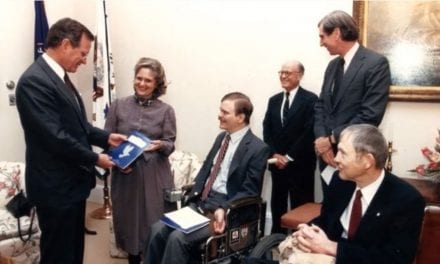The ADA Becomes Law
Action in the House of Representatives
While only one Senate committee had jurisdiction, in the House of Representatives four separate committees, with seven subcommittees, had jurisdiction to review the comprehensive bill. There would be eleven hearings and two House-Senate conferences throughout nine months before the bill was to become law. Objections from the business community were raised and further compromises were offered. The key negotiations in the House centered on discussions between Representative Steny Hoyer and his key staffer, Melissa Schulman, and Representative Steve Bartlett and his chief aide, Randy Johnson. Chai Feldblum and Arlene Mayerson played essential roles for the disability community.
The bill was on its way to becoming law, until Representative Jim Chapman and the National Restaurant Association raised concerns about food handlers with AIDS. Because of the AIDS epidemic, the Chapman amendment brought about intense maneuvering. Votes in the House and in the Senate dealt with this contentious issue. When the Chapman amendment was passed by the House, the disability community considered pulling its support for the bill if people with HIV were excluded from its protections. After considerable negotiations, with the assistance of Representative Hamilton Fish in the House, Senator Hatch helped resolve the issue with compromise language that provided the Secretary of HHS with authority to issue guidance on communicable diseases and food handling, which then passed by a wide margin in the Senate.
On July 12, 1990, the House of Representatives passed the Americans with Disabilities Act on a vote of 377-28 with 27 members not voting. The next day, the Senate passed the bill on a vote of 91-6 with 3 members not voting.
The Americans with Disabilities Act became the law of the land on July 26, 1990, when it was signed by President George H.W. Bush in a sun-drenched, emotional ceremony on the South Lawn of the White House with more than 3,000 people attending.



